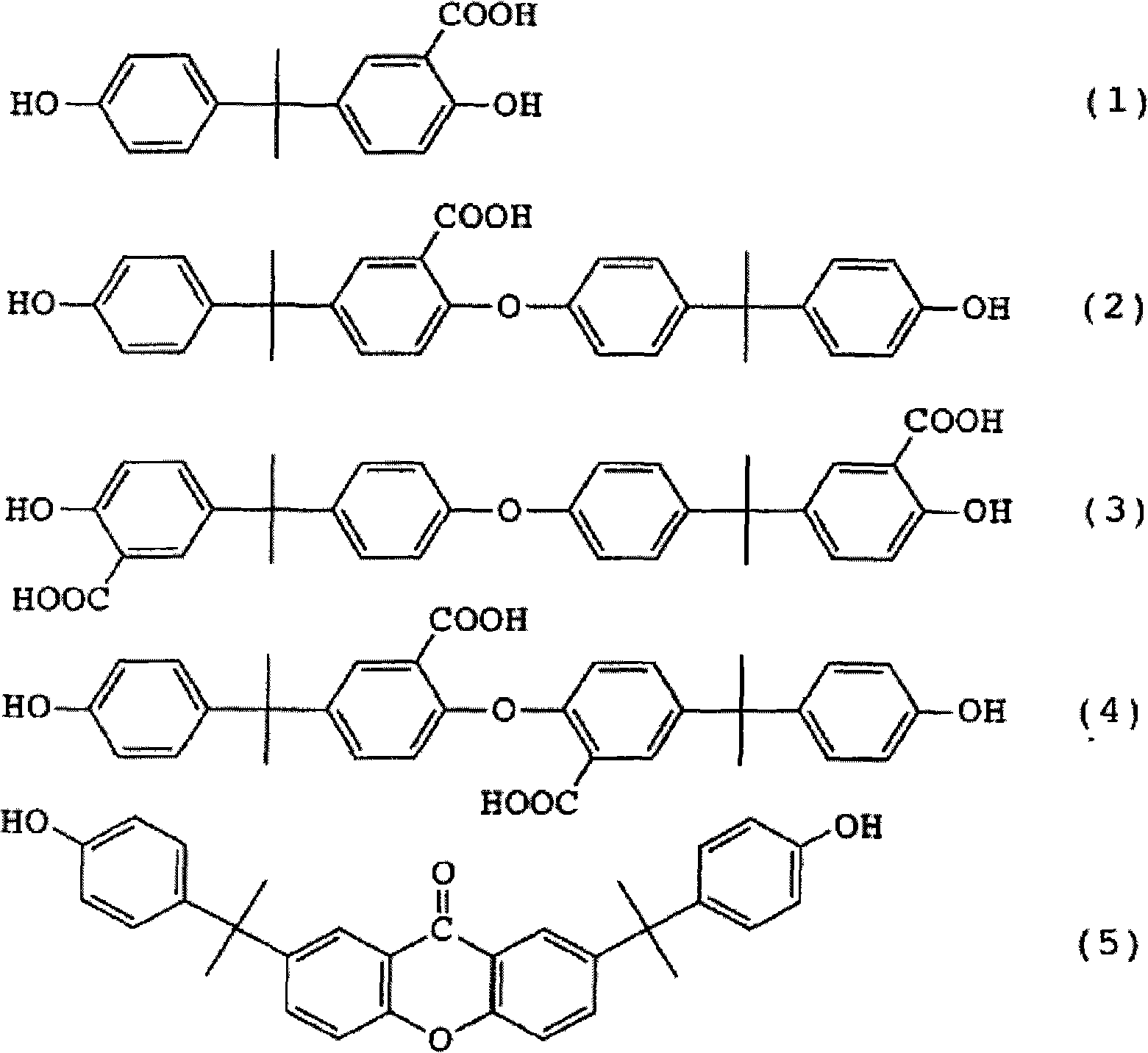Process for production of aromatic polycarbonate resin
A polycarbonate resin, aromatic technology, applied in the field of preparation of aromatic polycarbonate resin, to achieve the effect of excellent color and luster
- Summary
- Abstract
- Description
- Claims
- Application Information
AI Technical Summary
Problems solved by technology
Method used
Image
Examples
preparation example Construction
[0027] As a manufacturing method of an aromatic polycarbonate resin, a melt polymerization method (transesterification method), an interfacial polymerization method (phosgene method), etc. are mentioned, for example. By the melt polymerization method, an aromatic polycarbonate resin having an adjusted amount of terminal hydroxyl groups can be obtained.
[0028]Examples of aromatic dihydroxy compounds used as raw materials include 2,2-bis(4-hydroxyphenyl)propane (alias: bisphenol A), 2,2-bis(3,5-dibromo-4- Hydroxyphenyl) propane (alias: tetrabromobisphenol A), bis(4-hydroxyphenyl)methane, 1,1-bis(4-hydroxyphenyl)ethane, 2,2-bis(4-hydroxybenzene base) butane, 2,2-bis(4-hydroxyphenyl)octane, 2,2-bis(4-hydroxy-3-methylphenyl)propane, 1,1-bis(3-tert-butyl -4-hydroxyphenyl)propane, 2,2-bis(4-hydroxy-3,5-dimethylphenyl)propane, 2,2-bis(3-bromo-4-hydroxyphenyl)propane, 2 , 2-bis(3,5-dichloro-4-hydroxyphenyl)propane, 2,2-bis(3-phenyl-4-hydroxyphenyl)propane, 2,2-bis(3-cyclohexyl- 4-...
Embodiment
[0093] Hereinafter, the present invention will be described based on examples, but the present invention is not limited by these examples. The measurement of each physical property was performed by the following method.
[0094] (1) X-ray photoelectron spectroscopy (ESCA):
[0095] The filter material portion (fibrous) of the polymer filter was cut into 1 cm squares, and the ratio of the chromium atomic concentration to the iron atomic concentration on the outermost surface of the filter was measured using "Quantum 2000" manufactured by PHI Corporation. Monochromated AlKα rays were used as the X-ray excitation source, and the vicinity of the center of the fibrous sample was irradiated with an electron beam diameter of 20 μm. The energy spectrum of electrons emitted from the sample surface accompanying X-ray irradiation was measured under the conditions of an extraction angle of 45 degrees and a pass energy in the spectroscope of 58.7 eV. Background subtraction is performed o...
Embodiment 1B
[0121] In a nitrogen gas atmosphere, diphenyl carbonate (DPC) and bisphenol A (BPA) were mixed at a certain molar ratio (DPC / BPA=1.050) to prepare a raw material melt. Under the flow rate of 88.7kg / hour, the raw material molten liquid is continuously supplied into the first vertical stirred reactor with a capacity of 100 L through the raw material introduction pipe (the reactor is controlled at 220 ° C, 1.33 × 10 4 Pa), control the opening of the valve at the discharge line of the polymer disposed at the bottom of the reactor, so that the average residence time is 60 minutes, and the liquid level is kept constant. In addition, at the same time as the supply of the raw material melt was started, an aqueous cesium carbonate solution was continuously supplied as a catalyst, wherein the aqueous cesium carbonate solution was 1.0 micromole (with respect to 1 mole of bisphenol A, the amount of metal contained in it) 2.0 micromole) ratio of continuous supply.
[0122] Subsequently, t...
PUM
| Property | Measurement | Unit |
|---|---|---|
| Film thickness | aaaaa | aaaaa |
| Film thickness | aaaaa | aaaaa |
| Degree of branching | aaaaa | aaaaa |
Abstract
Description
Claims
Application Information
 Login to View More
Login to View More - R&D
- Intellectual Property
- Life Sciences
- Materials
- Tech Scout
- Unparalleled Data Quality
- Higher Quality Content
- 60% Fewer Hallucinations
Browse by: Latest US Patents, China's latest patents, Technical Efficacy Thesaurus, Application Domain, Technology Topic, Popular Technical Reports.
© 2025 PatSnap. All rights reserved.Legal|Privacy policy|Modern Slavery Act Transparency Statement|Sitemap|About US| Contact US: help@patsnap.com



